
Soil Associations
0541o MALHAM 1
Soil and site characteristics
Well drained silty soils over limestone. Some soils with a seasonally wet peaty surface horizon and thin ironpan. Bare rock locally.
Geology
Aeolian silty drift over Carboniferous and Jurassic limestone
Cropping and Land Use
Stock rearing on permanent grassland; some winter cereals and some herb rich habitats of moderate grazing value; coniferous forest; recreation.
Component soil series
| Subgroup | Series name | Percentage | WRB 2006 link |
|---|---|---|---|
| 5.41 | MALHAM | 50% | Eutric Endoleptic Cambisols |
| 6.51 | LONSDALE | 20% | Placic Endoskeletic Histic Stagnic Podzols |
Covers 122 km2 in England and Wales
Soilscapes Classification
| 16 |
Very acid loamy upland soils with a wet peaty surface |
0541o MALHAM 1
Detailed Description
This association occurs in the Craven district of North Yorkshire, around Buxton in Derbyshire, and in small areas in Cumbria, Lancashire and on the Hambleton Hills, North Yorkshire. It consists of well drained soils in silty aeolian drift, interspersed in places with limestone pavement or crags. The climate is cool, wet and windy. The Malham series, of the typical brown earths, is the dominant soil, and the Lonsdale series, belonging to the ironpan stagnopodzols, the main associate. In places, up to one-fifth of the ground is bare rock. This association covers only 28 km² in the region as most of the Carboniferous Limestone outcrop is covered by the Malham 2 association. In the Peak District, it occurs only on the highest ground, generally above 350 m, where the cool climate favours the development of peaty topsoils and ironpans. The small area north-east of Clitheroe, Lancashire is, however, at lower altitude. Rock outcrops, usually fringed by shallow Wetton soils, are common south of Buxton and in Lancashire. On the moors above Bradwell, Little Hucklow and Great Longstone, rock outcrops are rare but there are some Nordrach and Priddy soils. Here also, soils tend to be stonier than elsewhere with common angular and subangular cherts and occasional very stony horizons. There is widespread disturbance from lead mining and a small area of peat occurs on Bradwell Moor.
Small areas of the Wetton and Marian series are included. In the drier North York Moors there are some profiles of the Daletown series and some slightly argillic profiles occur among the Malham soils. Figure 38 relates the position of this association to others in the Ingleton district.
Soil Water Regime
Malham soils are rarely wet (Wetness Class I) and readily absorb winter rainwater, but the ironpan in the Lonsdale series impedes percolation so that surface horizons rapidly become saturated and remain in that state for long periods in winter (Wetness Class IV). The Malham series is not droughty but rooting is restricted in Lonsdale soils by the ironpan, and grass often wilts in dry summers.
Cropping and Land Use
Adverse climate limits the agricultural potential of these soils and they are all under permanent grassland, rough grazing or open moor except in the North York Moors where cropping is restricted to autumn-sown cereals. Regularly grazed, unreclaimed areas have Agrostis or Nardus dominant with a moderate grazing value but where grazing is infrequent, heather species invade the sward reducing its value. To reclaim Lonsdale and Priddy soils, the ironpan must be broken to improve permeability and the overlying horizons must be mixed by cultivation to form a thicker, less water retentive topsoil. Reclaimed Lonsdale and Priddy soils can normally be distinguished from Malham soils by their darker coloured humose topsoil, but large additions of lime and fertilizers are required to prevent re-formation of the ironpan. Even after reclamation, Lonsdale and Priddy soils are more susceptible to poaching damage than Malham soils. This limits the grazing period though good yields of grass are possible. Where the land is more sheltered Lonsdale soils are useful for forestry, if deep ploughs are used to shatter the ironpan; the main limitation then is shallow or exposed rock. The association is found in scenic areas, mostly within National Parks. By providing dry ground in rainy districts the association is well suited for recreation and is popular with walkers.
0541o MALHAM 1
Distribution Map
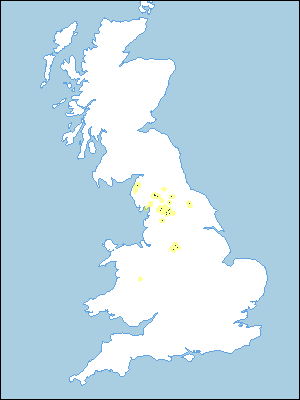 |
Note that the yellow shading represents a buffer to highlight the location of very small areas of the association.
Keys to component soil series
Northern Region
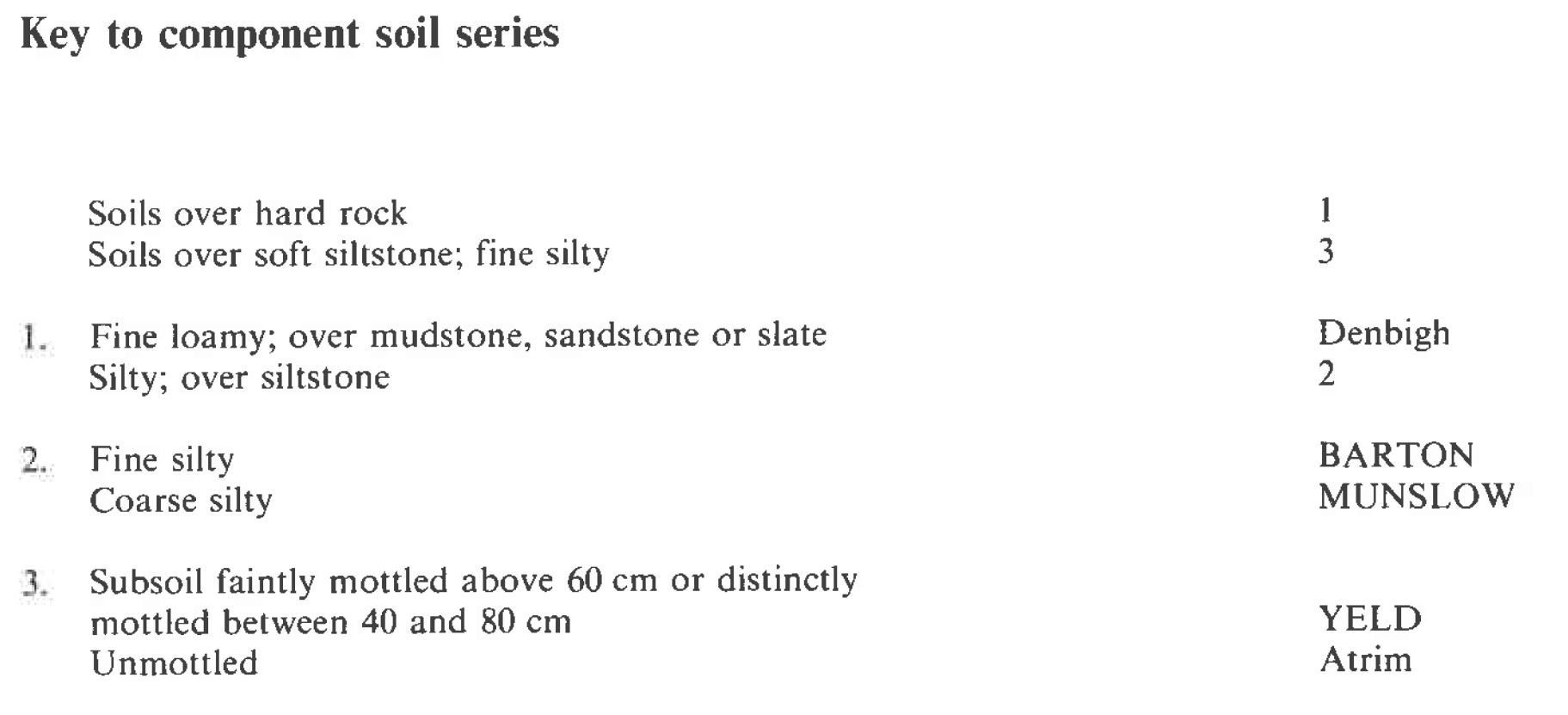 |
Midlands
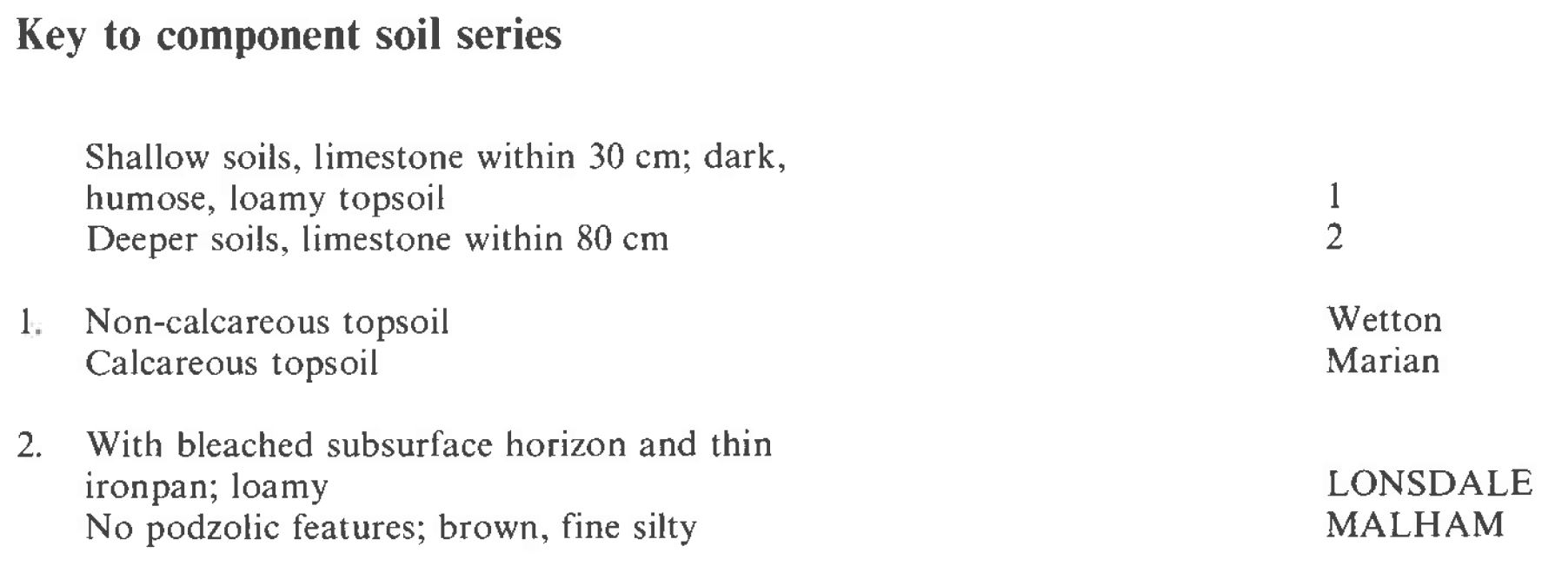 |
Typical Landscapes
Midlands
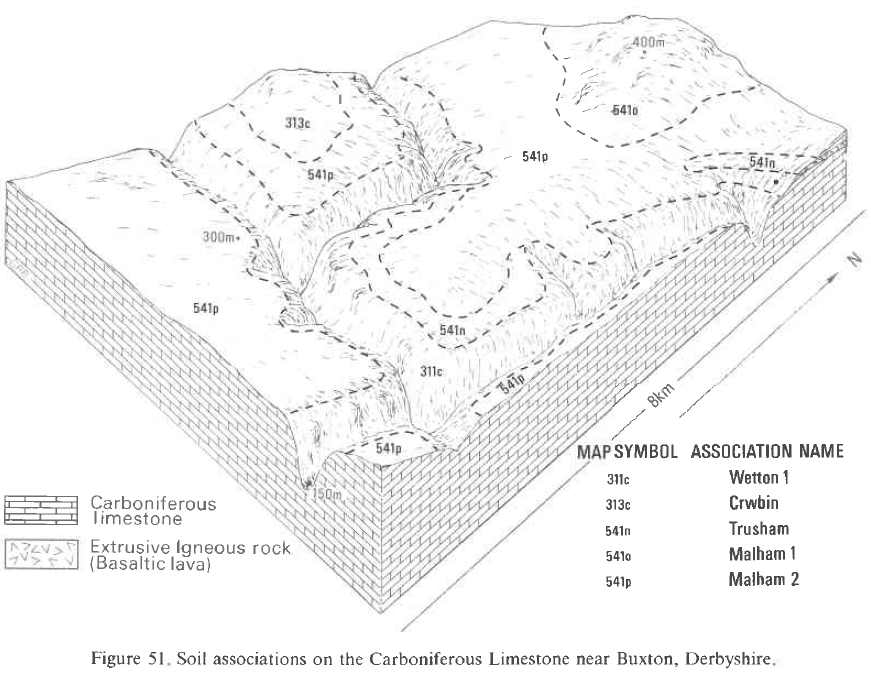 |
Northern Region
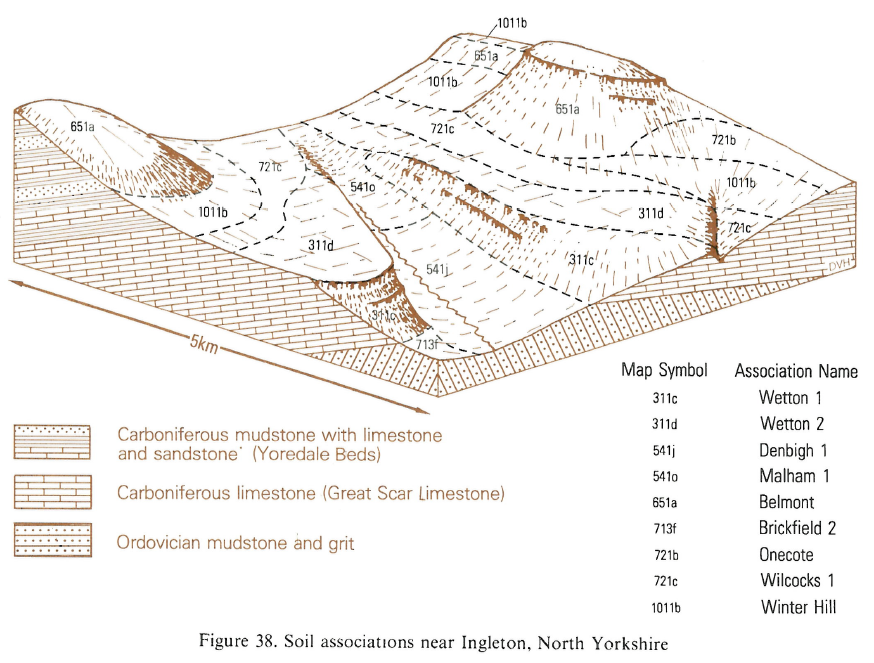 |
All information Copyright, Cranfield University © 2025
Citation: To use information from this web resource in your work, please cite this as follows:
Cranfield University 2025. The Soils Guide. Available: www.landis.org.uk. Cranfield University, UK. Last accessed 04/04/2025
